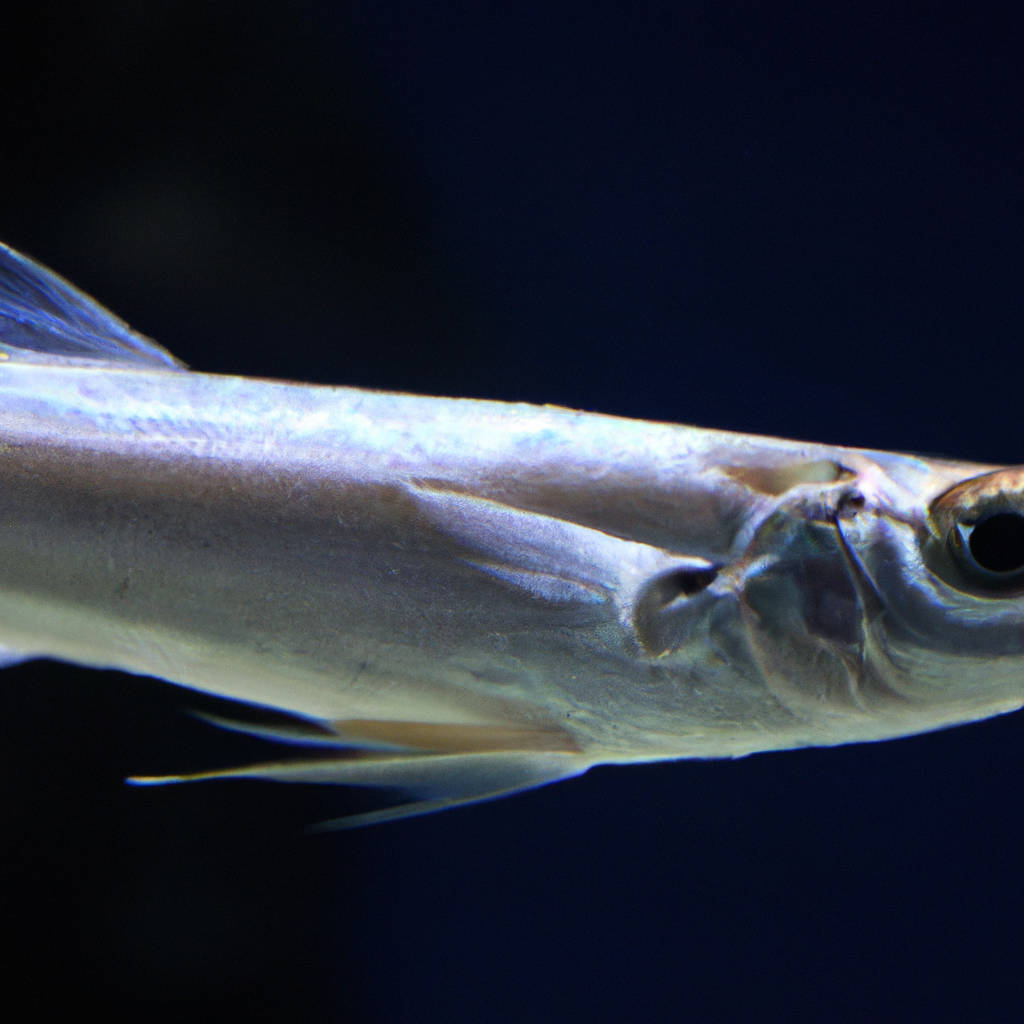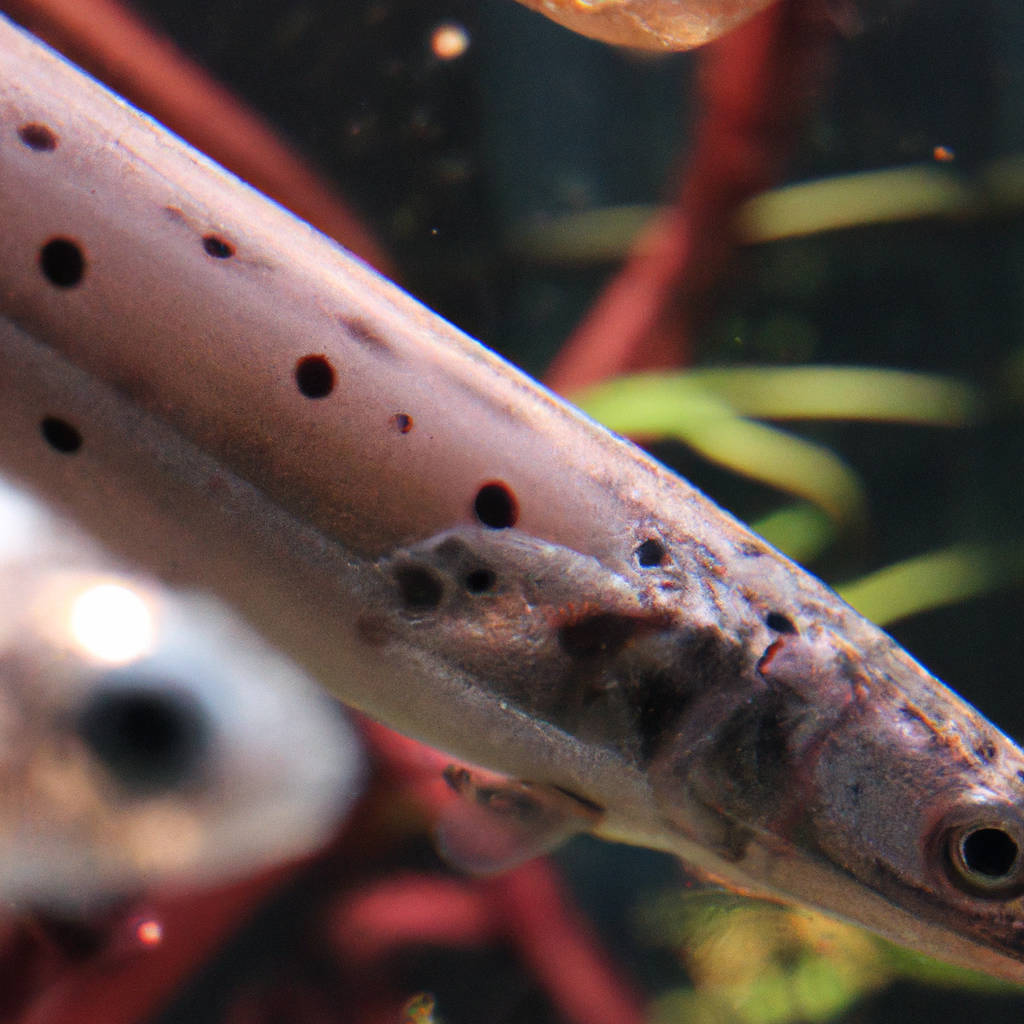The Candiru fish, also known as the “vampire fish,” is an Amazonian species that has been the subject of much debate and controversy over the years. Legendary tales from the Amazon basin have long spoken of a tiny, parasitic catfish known for invading the urethra of unsuspecting swimmers. These stories have been shared and passed down for centuries, instilling fear and dread in those who dare to venture into the waters of the Amazon River. The Candiru is said to be attracted to urine and allegedly uses the scent to target its victims.
However, the reality of these stories has been questioned by scientists and researchers. Some argue that the anatomical dimensions of the Candiru would make it physically impossible for the fish to invade a human urethra. Furthermore, there have been very few documented cases of Candiru attacks, and many of these reports have been criticized for a lack of credible evidence.
In fact, the only medically confirmed case of a Candiru invasion occurred in 1997, when a Brazilian man claimed to have had a Candiru swim up his urethra while he was urinating in a river. This case was documented by Dr. Anoar Samad, a urologist at the Federal University of Amazonas. However, even this widely cited incident has been met with skepticism.
Firstly, the fish extracted from the man was much larger than the typical Candiru, leading some to question whether it was indeed a Candiru or a different species altogether. Secondly, the man’s account of the incident was inconsistent with the known behavior of the Candiru. He claimed that the fish was attracted to his urine, but the Candiru is a sight predator that typically targets larger fish.
There is also a lack of historical evidence to support the idea that Candiru invasions are a common occurrence. Despite the widespread belief in these stories, there are no reports of Candiru attacks in any of the extensive medical and travel literature from the 19th and early 20th centuries. This suggests that the Candiru’s reputation as a urethral invader is more myth than reality.
Despite the lack of concrete evidence, the Candiru continues to be feared and reviled. It has become a symbol of the dangers and mysteries of the Amazon, a creature that embodies the trepidation many feel towards this vast and unexplored wilderness. Whether fact or fiction, the story of the Candiru and its alleged urethral invasions serves as a potent reminder of the power of folklore and the human imagination.
In conclusion, while the Candiru fish has been widely characterized as a urethral invader, the evidence supporting this claim is tenuous at best. It seems more likely that the Candiru’s fearsome reputation is the result of cultural myth and folklore rather than scientific fact. Nevertheless, the story of the Candiru continues to captivate and terrify, serving as a testament to the enduring power of myth and the unknown.

Truth Behind the Candiru Fish Myth
The Candiru fish, also known as the vampire fish, has been the subject of a longstanding myth that has fascinated and horrified people for centuries. Native to the Amazon River, this tiny, translucent fish has been notoriously linked to a tale of terror involving humans.
According to the folklore, the Candiru fish is said to possess the ability to swim up a human’s urine stream and lodge itself painfully inside the urinary tract. This myth, which has been perpetuated through countless retellings and even dramatized in popular media, is largely based on a single, unverified case from the 19th century. However, scientific scrutiny has largely debunked this tale. The hydrodynamics of the situation make it nearly impossible for the fish to swim upstream against the force of flowing urine. Moreover, Candiru fish, which are actually parasitic and feed on the gills of other fish, have no biological attraction to human urine.
The chances of a human ever encountering a Candiru in such a way are astronomically low, making this myth more of a figment of cultural fear than a factual occurrence. This is not to diminish the fact that Candiru can be harmful to other fish species. Still, it is essential to differentiate between validated scientific facts and sensationalized tales that have been passed down through generations. The truth behind the Candiru fish myth is a testament to the power and persistence of folklore, often overshadowing the real behavior and characteristics of this unique Amazonian fish species.
Real Encounters or Exaggerated Stories?
The topic of real encounters versus exaggerated stories is a fascinating one that, at its core, speaks to the human propensity for storytelling and the malleability of memory. Real encounters are experiences lived by individuals in the physical world, they are concrete, tangible, and can be validated by others who were present at the same time.
However, as these encounters pass through the sieve of our personal perspective and interpretation, they may sometimes transform into exaggerated stories. These are narratives that have been embellished or distorted, either consciously or unconsciously, for a variety of reasons. Some individuals might exaggerate stories to make them more engaging or to emphasize their own role or importance within the encounter. On the other hand, some may unconsciously exaggerate or distort their recollections due to the inherent fallibility of human memory.
In such instances, the boundaries between fact and fiction can become blurred, creating a realm where the real and the exaggerated coexist. This is particularly true in situations where the encounter was intense or emotionally charged, as these experiences tend to be more susceptible to exaggeration. Psychologists have suggested that this occurs because our emotional state at the time of an event can influence how we remember and recount it.
Moreover, the culture of sharing experiences, especially on social media, has further added to this phenomenon. People often feel compelled to present an idealized version of their lives, leading to exaggeration and distortion of real encounters. In conclusion, while real encounters and exaggerated stories are fundamentally different, they are also inextricably connected. Our perception, interpretation, and recollection of real encounters can often transform them into exaggerated stories, offering a fascinating glimpse into the human mind and its relationship with reality.

Historical Accounts and Scientific Evidence
Historical accounts and scientific evidence are two integral components in understanding our past as well as forming our perception of the world. Historical accounts often provide an extensive overview of civilizations, cultures, wars, politics, and significant global events that have shaped our present. These accounts, often documented in texts, artifacts, or oral traditions, give a rich and detailed insight into the ways of life, beliefs, and practices of our ancestors. However, they are subjective to interpretation and can be influenced by the biases of the historians or the limitations in the available information.
On the other hand, scientific evidence, derived from rigorous and methodical research, often provides objective, quantifiable data about natural and physical phenomena. This can include evidence of climate patterns, geological transformations, evolution of species, and even the existence and extinction of prehistoric life forms. Scientific evidence, therefore, offers a more rational and empirical perspective on the universe and our place in it.
When combined, historical accounts and scientific evidence can provide a more comprehensive and balanced understanding of our history. For instance, historical accounts of a civilization’s decline may cite political instability or invasions as the cause. However, scientific evidence like climatic data or archaeological findings can suggest factors like prolonged drought or disease outbreaks, providing a more complex and nuanced explanation.
This intersection of history and science can also help debunk misconceptions or rectify inaccuracies in our understanding of the past. While historical accounts are essential in framing the narrative of our collective past, scientific evidence ensures the narrative is grounded in empirical facts and logical reasoning. Hence, it is crucial to value and utilize both historical accounts and scientific evidence in our pursuit of knowledge about our past, present, and future.
Understanding the Candiru Fish
The Candiru fish, also known as the vampire fish, is a freshwater species native to the Amazon River. This small, transparent fish has a notorious reputation due to its parasitic lifestyle and unique method of survival. Measuring up to six inches in length, the Candiru fish primarily feeds on the blood of other fish. It finds its prey by detecting the stream of water expelled from the gills and quickly swims into the gill opening, latching onto the gills with sharp, backward-facing spines on its head. Once secured, it uses its needle-like teeth to penetrate the host’s arteries, consuming its blood for sustenance.
Despite its blood-sucking habits, the Candiru fish does not typically pose a threat to humans. However, there have been isolated incidents where the fish has been known to enter the human body through urine streams while people were bathing in the Amazon River. This has led to a widespread fear of the Candiru fish, with many people wrongly believing the fish actively seeks out human hosts. In reality, such incidents are extremely rare and largely accidental.
Understanding the Candiru fish requires a deeper comprehension of its habitat, behavior, and survival instincts. Despite its fearsome reputation, it plays a crucial role in the ecosystem of the Amazon River. It is a part of the complex food chain, serving as prey for larger predators.
The Candiru fish also helps regulate the population of other fish species by feeding on their blood. Its unique survival strategy serves as a stark reminder of the diversity and adaptability of life forms in the face of challenging circumstances. This intriguing creature is indeed a testament to the myriad mysteries and wonders of the aquatic world.

Safety Measures and Precautions
Safety measures and precautions are crucial aspects of our everyday life, whether in our homes, workplaces, schools, or on the roads. These strategies are designed to reduce the risk of potential harm or damage to individuals, properties, and the environment. For instance, wearing seatbelts while driving, using helmets while biking, or installing smoke detectors in buildings are all practical examples of safety measures.
In the workplace, safety measures and precautions are paramount as they not only protect employees, but also enhance productivity and morale. Companies are required to adhere to certain standards that ensure the well-being of their staff. These include providing the necessary personal protective equipment (PPE) such as safety goggles, gloves, and hard hats, ensuring proper training on handling machinery and equipment, and maintaining a clean and hazard-free environment.
Moreover, in homes, simple precautions can prevent accidents and injuries. Installing handrails on stairs, securing rugs to avoid slips, and keeping emergency contact numbers readily available are among the basic measures that can be implemented.
To ensure the safety of children in schools, measures such as supervision during playtime, regular health and safety training, and maintaining secure premises are compulsory. Schools also need to develop a comprehensive safety plan that includes procedures for evacuation in case of emergencies, first aid provision, and regular safety drills.
In public spaces, safety measures include clear signage indicating potential hazards, well-lit pathways, and regular maintenance checks. For instance, in parks, it’s important to have lifeguards on duty near swimming areas, and regular checks on playground equipment to ensure they are in proper working condition.
In conclusion, safety measures and precautions play a pivotal role in preserving life, health, and property. They are not only essential in preventing accidents and injuries but also in fostering a sense of security and well-being in our communities. It’s everyone’s responsibility to adhere to these measures and make our world a safer place.
